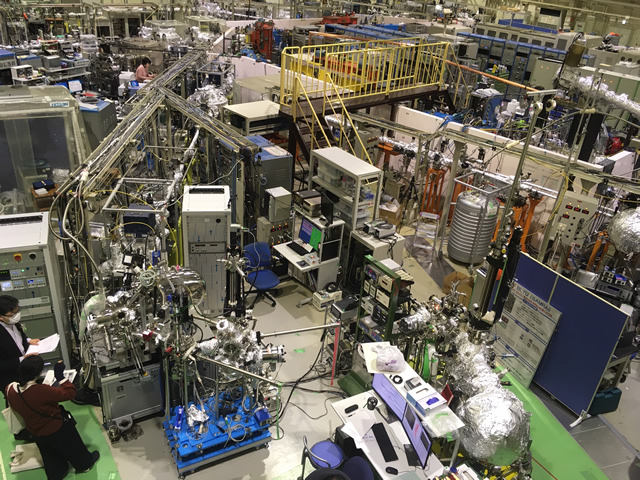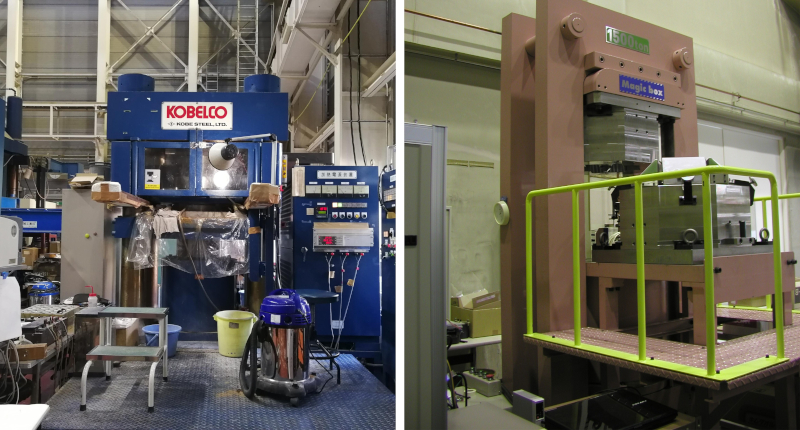Condensed Matter Experiment Ⅰ
Strongly Correlated Electron Physics
Staff
| Visiting Professor : | Satoshi Kera | Yo Tokunaga | Kazunari Yamaura | |
Research
Strongly Correlated Electron Physics Group consists of three guest professors belonging to national and independent research institutes. Research topics of each group are as follows.
URL: https://groups.ims.ac.jp/organization/kera_g/index_e.html
Some of organic compounds show a peculiar property as a strongly-correlated electron. The nature would be considered in a unique hierarchy character of a localized electron in a molecule. Most of the molecules form a solid by a weak vdW force, hence the origins of materials function and properties are governed by a weak electronic coupling as well as a strong electron-phonon coupling. Since the impacts of such a weak interaction on the electronic state are appeared competitive and complicated way, it is very difficult to evaluate experimentally. We have investigating the characteristics of molecular assemble by looking the electronic states and vibrational states precisely.

Yo Tokunaga (JAEA)
URL: https://asrc.jaea.go.jp/asr_eng/
Since the discovery of superconductivity in 1911, many types of superconductors have been found, including cuprates, organic materials, and iron-based compounds. These discoveries have revealed the diverse properties of superconductors. In particular, since the 2000s, a new type of superconductivity called “spin-triplet superconductivity” has been discovered in uranium-based compounds. This has attracted significant attention due to its unusual properties. For example, surprising phenomena have been observed, such as the microscopic coexistence of ferromagnetism and superconductivity. Additionally, in some cases, superconductivity is enhanced rather than weakened when a magnetic field is applied.
Spin-triplet superconductors are also expected to function as topological superconductors, which may be useful for next-generation quantum computers. Our research group employs various experimental techniques, including nuclear magnetic resonance (NMR), single-crystal growth, magnetic and transport measurements, and neutron scattering, to study new and intriguing properties of strongly correlated electron systems. We also utilize microfabrication techniques for single crystals in these studies.

Kazunari Yamaura, (National Institute for Materials Science, NIMS)
URL: https://www.nims.go.jp/eng/index.html
Dr. Kazunari Yamaura specializes in the development of exchange bias materials and their applications in spintronics, particularly in strongly correlated electron systems. His research focuses on designing bulk materials that exhibit exchange bias effects without relying on artificial interfaces, exploring double perovskite compounds to achieve this goal. Using high-temperature and high-pressure synthesis equipment at NIMS, he synthesizes novel materials and evaluates their structural properties through high-resolution X-ray diffraction measurements at the synchrotron radiation beamline at SPring-8. Additionally, first-principles calculations are employed to analyze the underlying mechanisms governing these properties, integrating both theoretical and experimental approaches to material design. Dr. Yamaura leverages NIMS’s state-of-the-art facilities and collaborates internationally with institutions such as ORNL and ISIS to conduct neutron diffraction experiments for magnetic structure analysis. Through these studies, he aims to elucidate the effects of magnetic anisotropy and electron correlation in strongly correlated systems, contributing to the development of next-generation functional materials.


